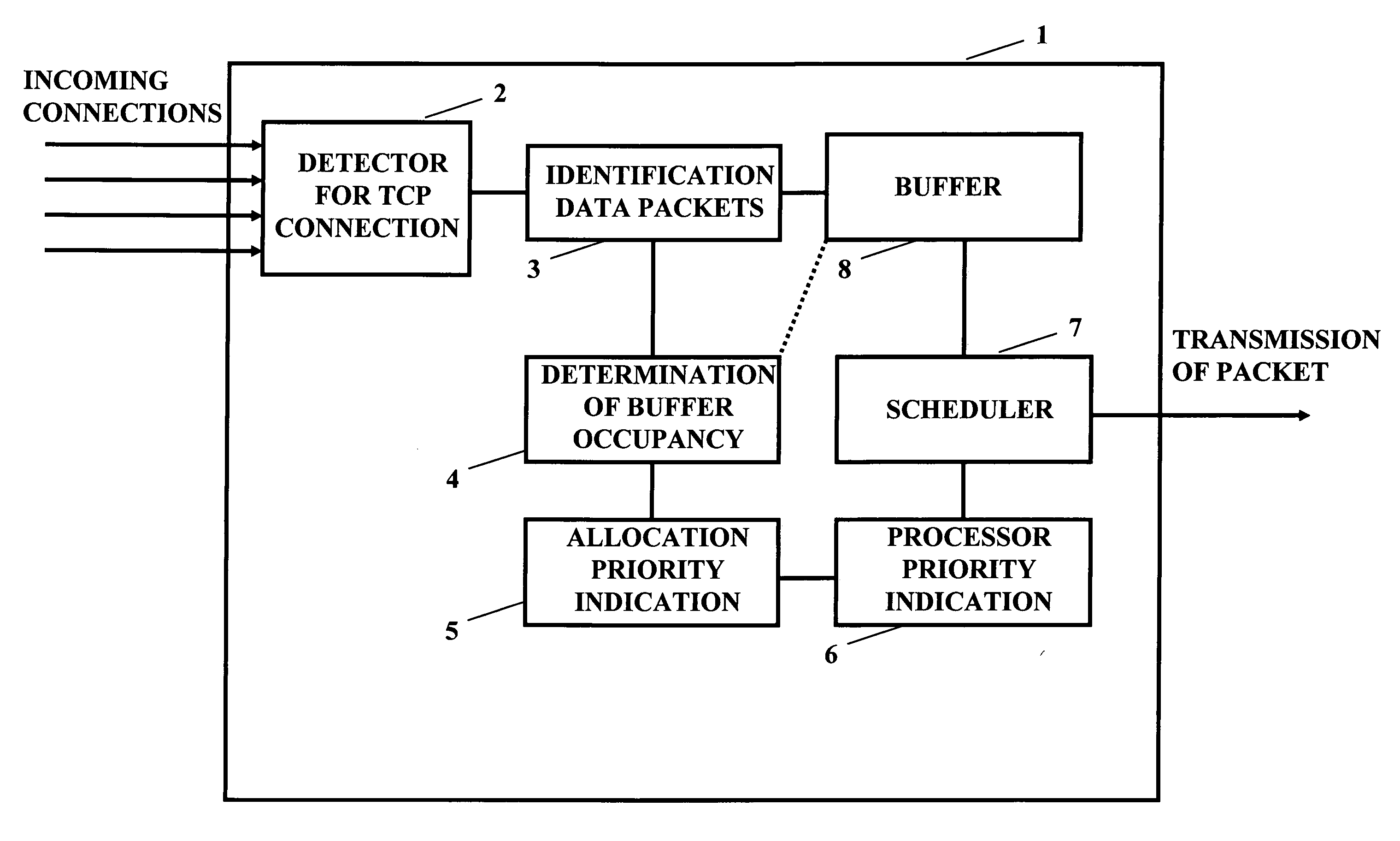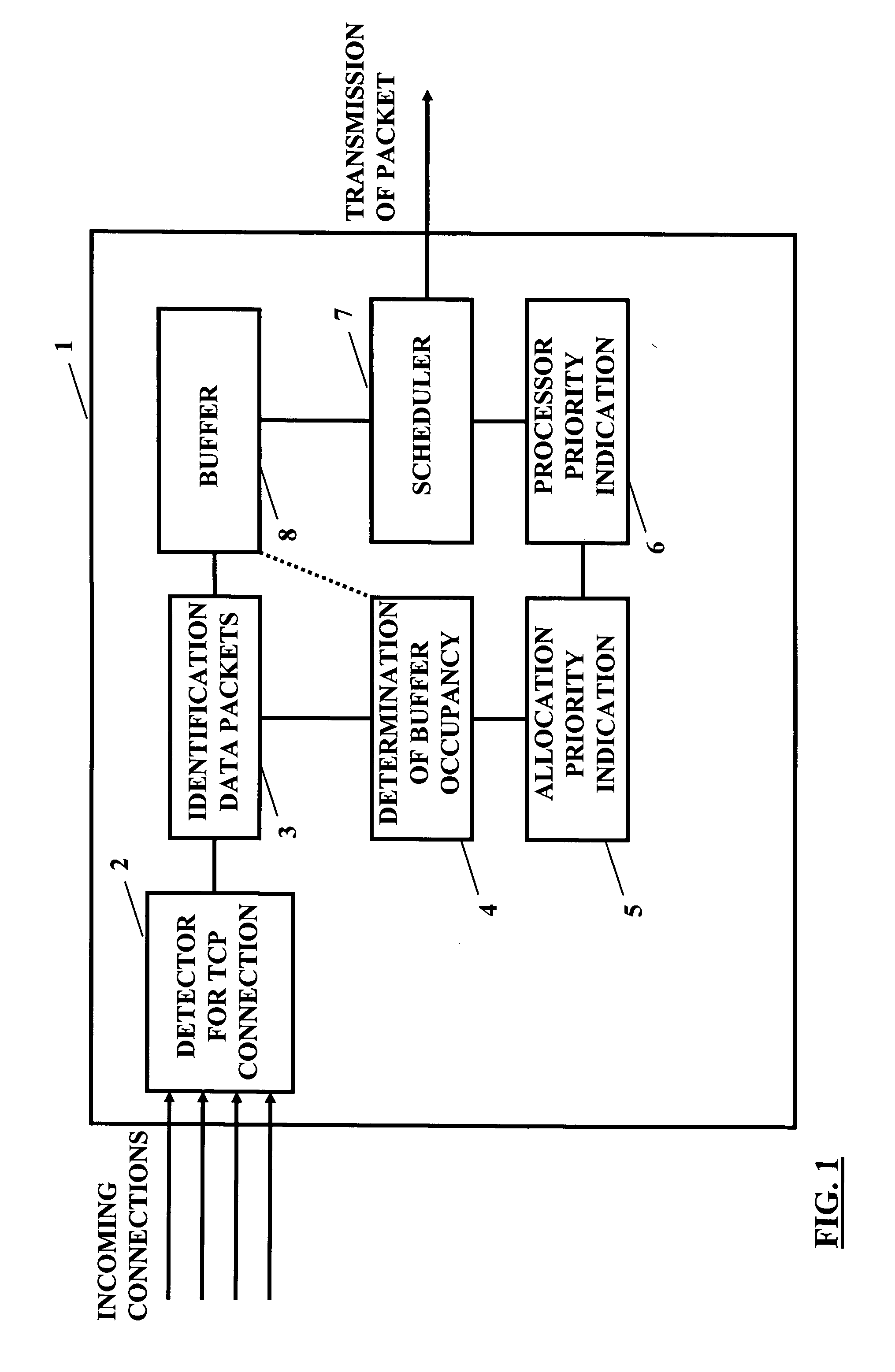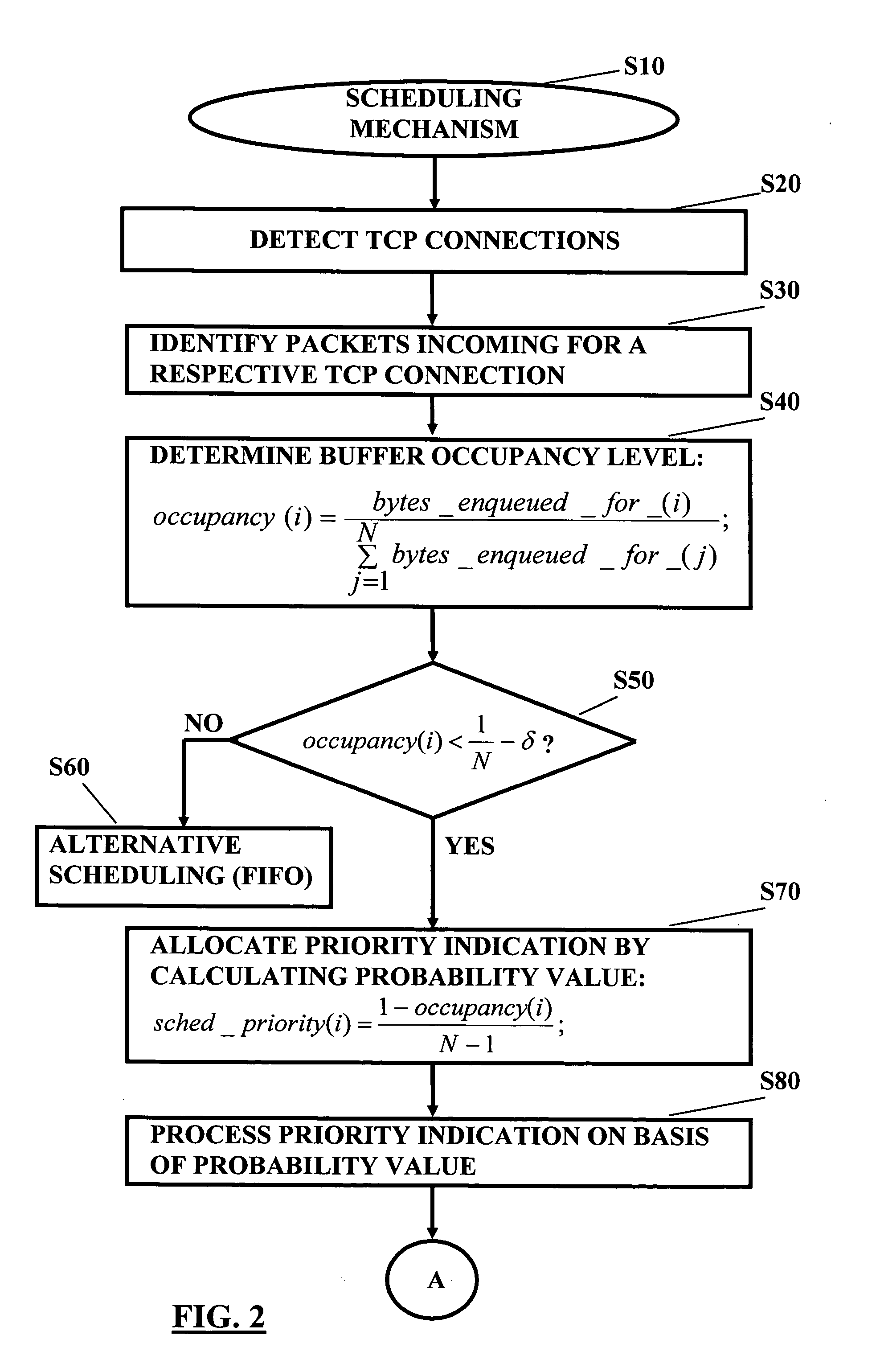Expedited data transmission in packet based network
a packet-based network and data transmission technology, applied in the field of data transmission in a packet-based network, can solve the problems of tcp sender requiring a long time to reach a reasonable throughput, congestion may also occur, and the rate at which acks are received is extremely slow, so as to avoid congestion on the network side and/or the server (sender) side. the effect of improving the throughput of data
- Summary
- Abstract
- Description
- Claims
- Application Information
AI Technical Summary
Benefits of technology
Problems solved by technology
Method used
Image
Examples
first embodiment
[0074] According to the first embodiment, in general, in the proposed transmission control mechanism, a preferential treatment is given to flows / connections that transmit a smaller amount of data in comparison to other flows / connections. This is in particular effective in connection with a network node of a cellular network close to the access link, such as a SGSN in case of GPRS or the like, since at this place in the end-to-end transmission path a “bottleneck” may be established due to the fact that most of the transmission buffering takes place there. In particular, an efficient queuing / scheduling algorithm is used that can expedite, for example but not exclusively, the slow start of a connection. This is based on the observation that at the start of the connection the buffer occupancy of a slow starting connection is much smaller than that of other connections. Therefore, by giving higher priority (i.e., by scheduling packets in slow start ahead of other connections) to those co...
second embodiment
[0115] Next, a further embodiment of the present invention will be described with reference to FIGS. 7 to 10.
[0116] In contrast to the first embodiment where the increase the throughput is achieved by using a weighted fair queuing (WFQ) mechanism in a network node being part of the network infrastructure (in particular for expediting slow start), according to the second embodiment, a mechanism is described which enables a prioritised scheduling at a TCP sender, such as a mobile station, a server and the like. By means of this, the dependency on a network implementation is avoided.
[0117] Usually, at the TCP sender side, the sender (or server) recognizes a relatively high-speed link, at least in comparison to a cellular link bottleneck like a network node (e.g. the SGSN) where most transmission buffering takes place. Therefore, on the sender side, usually no transmission buffering is performed (however, it is to be noted that a copy of the transmitted data / packets may be kept for po...
PUM
 Login to View More
Login to View More Abstract
Description
Claims
Application Information
 Login to View More
Login to View More - R&D
- Intellectual Property
- Life Sciences
- Materials
- Tech Scout
- Unparalleled Data Quality
- Higher Quality Content
- 60% Fewer Hallucinations
Browse by: Latest US Patents, China's latest patents, Technical Efficacy Thesaurus, Application Domain, Technology Topic, Popular Technical Reports.
© 2025 PatSnap. All rights reserved.Legal|Privacy policy|Modern Slavery Act Transparency Statement|Sitemap|About US| Contact US: help@patsnap.com



